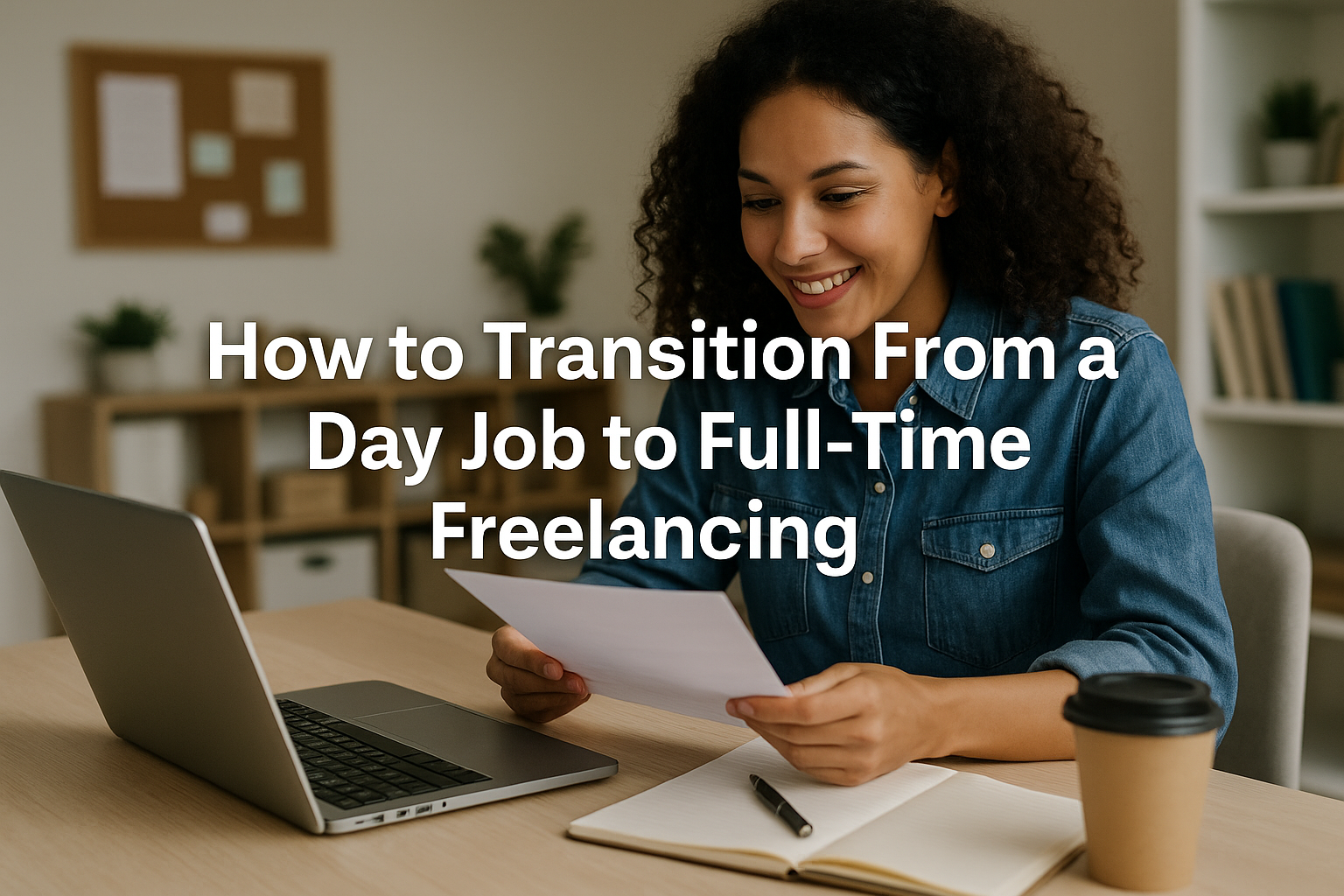Dreaming of ditching your 9-to-5 and becoming your own boss? You’re not alone. Many freelancers start out working full-time jobs and transition gradually into running their own business. But quitting too soon—or without a plan—can lead to stress and financial strain. In this article, you’ll learn how to make a smooth, smart, and sustainable shift from a traditional job to full-time freelancing.
Why a Gradual Transition Is Smart
Freelancing offers flexibility and freedom—but it also comes with risk and responsibility.
✅ No guaranteed paycheck
✅ No employer-covered benefits
✅ Total control over your time and income
That’s why it’s safer to build your freelance foundation before jumping ship. You don’t need to quit today—you just need a plan.
Step 1: Get Clear on Why You Want to Go Freelance
Before you leave your job, know what’s motivating you.
Ask yourself:
- What do I want more of in my life? (time, purpose, income?)
- What do I want less of? (commute, office politics, lack of growth?)
- What kind of work excites me most?
- Am I ready to take full responsibility for my income?
Clarity fuels commitment—especially when the transition gets tough.
Step 2: Start Freelancing on the Side
You don’t need to go all-in immediately. Start building your freelance business while still employed.
How:
- Offer services on weekends or evenings
- Take on small, one-off projects
- Use Upwork, Fiverr, or local referrals
- Reach out to your network
This helps you test your niche, refine your offer, and build confidence before going full-time.
Step 3: Choose a Freelance Niche and Service
Don’t try to serve everyone. Specialize early to stand out and attract better clients.
Focus on:
- What you’re good at
- What you enjoy doing
- What people are willing to pay for
Examples:
- Social media for small businesses
- Website design for wellness brands
- SEO content for SaaS startups
- Virtual assistance for busy solopreneurs
Be known for one clear thing.
Step 4: Create a Financial Safety Net
Money stress is a major reason freelancers quit. Before you leave your job, build a buffer.
Aim for:
- 3 to 6 months of living expenses
- A list of recurring bills and minimum monthly needs
- Clear knowledge of your desired monthly freelance income
Pro tip: open a separate savings account and automate deposits.
Step 5: Set a Quit Date (Even If It Changes)
Choosing a date makes your goal real and tangible.
- Pick a date 3–12 months out
- Base it on your savings, current clients, or a financial milestone
- Adjust as needed—but keep moving forward
Treat it like a product launch. You’re preparing to launch YOU.
Step 6: Build a Client Pipeline Before You Quit
Don’t wait until your last day at work to start looking for clients.
✅ Pitch weekly
✅ Post on LinkedIn or Instagram
✅ Ask for referrals
✅ Work with 1–2 long-term clients if possible
✅ Build a waitlist
Your goal: prove to yourself that demand exists before you quit.
Step 7: Create a Basic Freelance System
Before going full-time, set up:
- A service guide or pricing sheet
- A proposal template
- A simple contract
- A way to send invoices (e.g., Wave, PayPal)
- A portfolio or website (even if it’s one page)
This gives you a smooth, professional start.
Step 8: Talk to Your Employer (If Safe to Do So)
If you have a good relationship with your boss and it’s appropriate, let them know your plans.
Benefits:
- Possible freelance work from your current company
- A smoother offboarding
- A positive reference or testimonial
If not safe or relevant, that’s okay too—just be discreet while you prepare.
Step 9: Plan for the First 90 Days as a Full-Time Freelancer
Once you quit, treat your freelance business like a job.
✅ Set working hours
✅ Create a weekly marketing plan
✅ Pitch consistently
✅ Track your income and expenses
✅ Check in weekly on progress
The first 3 months are about momentum—not perfection.
Step 10: Celebrate the Leap (And Stay Flexible)
Quitting your job to freelance full-time is a huge step. Celebrate it!
But also know:
- You will make mistakes
- Some months will be slow
- You’ll grow faster than you expect
Stay flexible, keep learning, and believe in your ability to figure things out.
Final Thoughts: Freelance Freedom Starts With a Plan
You don’t need to quit your job overnight. With intention, clarity, and consistency, you can build a freelance business that supports your life—not replaces it with more stress.
So take the next right step.
✅ Start part-time
✅ Build your brand
✅ Save your runway
✅ Land your first few clients
Then when you’re ready—make the leap.
And never look back.

